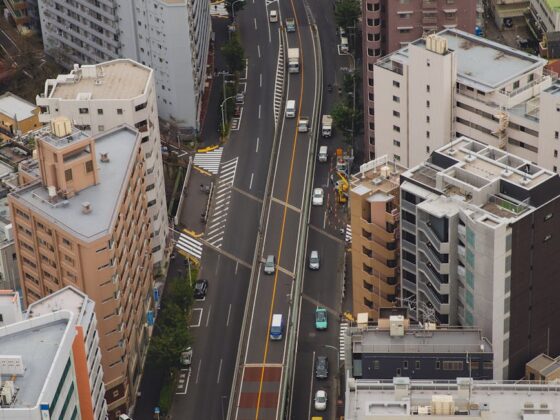Understanding the Layout of Train Stations
When I arrive at a train station in Japan, the first thing I notice is the organized and structured layout. Most train stations are sizeable and can have multiple levels. Platform numbers are usually clearly marked, and each platform corresponds to specific trains, including the famous shinkansen.
Typically, major stations like Tokyo and Kyoto have different sections for local trains, express trains, and shinkansen services. It’s essential to familiarize myself with the station map, which is often displayed at key points throughout the station. Additionally, there are information desks where staff can assist me in case I have questions or need directions.
| Level | Services Offered |
|---|---|
| Ground Level | Ticketing, Shops, and Accessibility Services |
| First Level | Platforms for Local and Express Trains |
| Second Level | Shinkansen Platforms |
Useful Signs and Symbols to Look Out For
Navigating train stations becomes easier when I understand the signs and symbols used. Most signs are in both Japanese and English, facilitating comprehension for international travelers. Some common signs I keep an eye out for include:
- Platform Numbers: Indicate which train to board.
- Train Type: Symbols representing local, express, and shinkansen trains.
- Exits: Clearly marked with arrows and exit symbols.
- Facilities: Indicators for restrooms, shops, and waiting areas.
It’s essential to pay attention to the various colors and shapes used in the signage. For example, platforms for shinkansen trains are often highlighted with a specific color that stands apart from local or express train platforms.
For further insight into specific aspects of traveling on the shinkansen, I can also explore additional articles like travel between cities in japan or shinkansen travel hacks for practical tips and strategies on making the most of my journey.
Traveling by train in Japan can be a seamless experience when I know how to navigate the stations effectively. Here are some helpful tips for purchasing tickets, utilizing machines, locating platforms, and following proper etiquette.
Purchasing Tickets and Passes
When I arrive at a train station, the first step is often purchasing tickets or passes. Japan’s train systems, including the shinkansen, offer various ticket options depending on my travel needs. Here’s a quick reference guide:
| Ticket Type | Description |
|---|---|
| One-way Ticket | For single journeys between stations |
| Round-trip Ticket | For two journeys between the same stations |
| Japan Rail Pass | Unlimited travel on JR trains for 7, 14, or 21 days |
| Reserved Seat Ticket | Guarantees a seat on specific shinkansen trains |
I can purchase tickets at ticket counters or through automated ticket machines, which usually have English language options. For longer journeys, it’s beneficial to book shinkansen tickets online in advance.
Utilizing Ticket Machines and Fare Adjustment Machines
Ticket machines are convenient and easy to use. I select my destination, choose my train type, and pay using cash or credit card. For fare adjustment machines, if my fare changes due to a different route or train, I can pay the difference before my journey.
Here are the steps I follow at a ticket machine:
- Choose the language (look for the English option).
- Select my destination from the map or list.
- Choose the type of ticket and class.
- Insert cash or swipe my card.
- Collect my ticket and change.
Locating Platforms and Transferring Trains
Once I have my ticket, I need to locate my platform. Most train stations have clear signage, often in both Japanese and English. Stations may have information screens displaying train schedules, including which platform and time the next train departs.
If I need to transfer trains, I pay attention to connection signs that guide me to different platforms. It’s helpful to take note of train names, as I can quickly find the right track. For more information on changing trains smoothly, refer to the article on travel between cities in Japan.
Following Proper Train Etiquette
Japan has specific etiquette rules for train travel. Being respectful during my journey is essential. Here are some key practices:
- Quiet Zones: Many trains have designated quiet cars; I should keep conversations to a minimum and silence my phone.
- Seat Reservations: If I have a reserved seat, I need to sit in the correct car to avoid confusion.
- Eating and Drinking: Eating in public spaces is generally not preferred, though acceptable on shinkansen. I should be discreet and clean up after myself.
- Luggage: Keep luggage in designated areas to ensure pathways remain clear. Familiarizing myself with the shinkansen luggage rules is a good idea before travel.
By following these tips, I can ensure a smoother travel experience while exploring Japan’s incredible train system.










